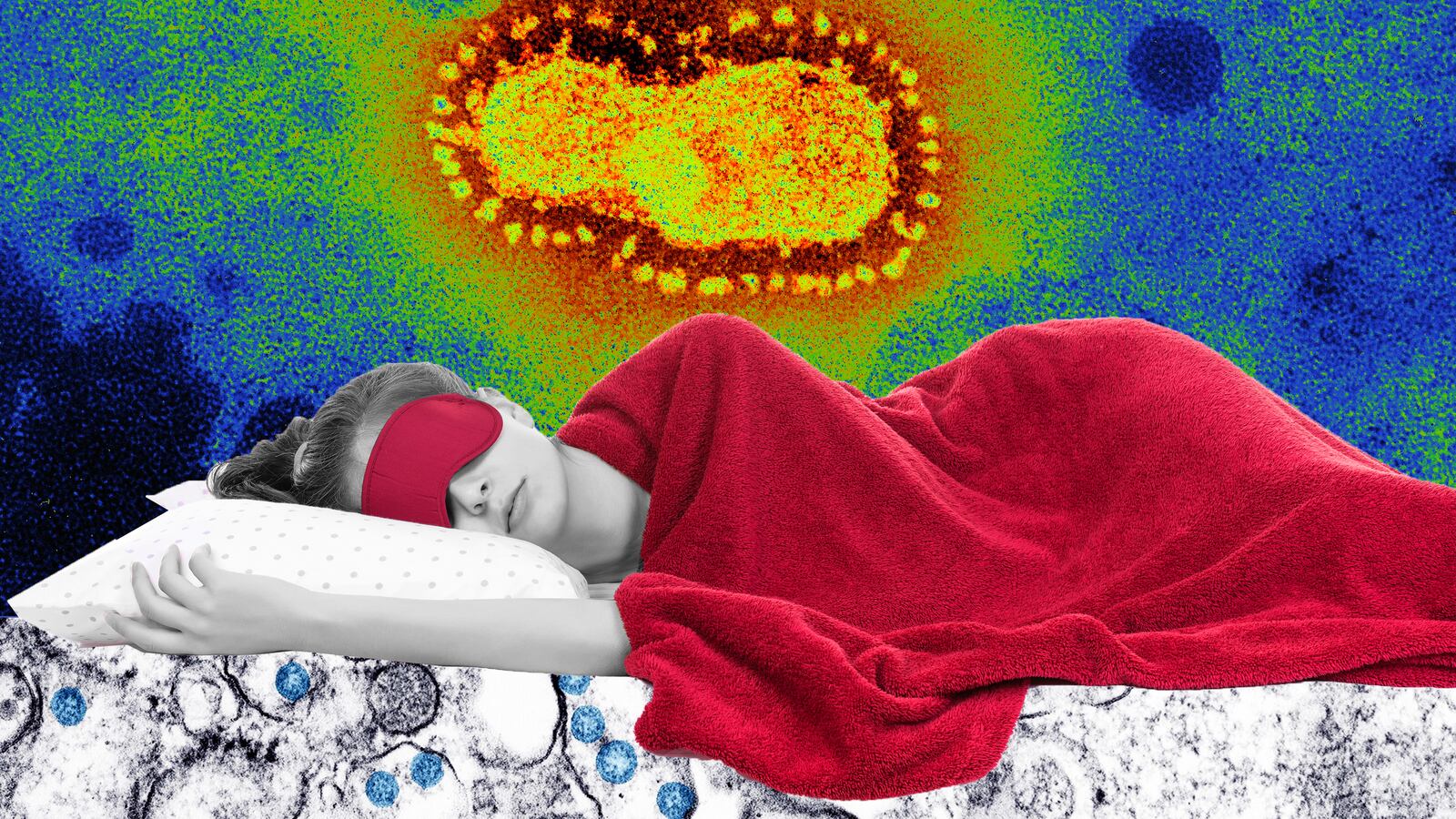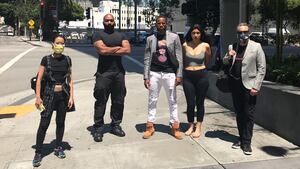One of the peculiarities of online dream analysis, at least for those of us without advanced psychiatry degrees, is its tendency to get specific. On an interpreter like Dream-Meaning.net, where users can search precise imagery for meaning, ambiguity is an afterthought. The image of a diaper, for example, broadly symbolizes “childish or dependent attitudes.” But the entry also breaks down into 14 subgenres, such as “Wearing Diaper” (feeling ashamed about needing help), “Getting and Receiving Diaper” (mommy issues), “Holding a Diaper With Leaks” (problems or conflicts with children), and “Soiled Poopy Diaper” (a “positive sign” that pet projects will soon become highly profitable).
Whether you believe them or not, the fun of these analyses comes from their contrast with dreams themselves, which generally speaking, trend flaky. Our sleep imaginations rarely generate clear stories, so much as stitch brain detritus into a quick montage. Tables can turn into chairs, then into Aunt Susan. Throughlines fade as quickly as they came. That’s where online analysis comes in. How clarifying to hear a nightmare about “Having a Hairy Stomach” merely portends that “your business is bringing you more wealth and expanding your influence against the competitors.”
But in early April, just weeks after social distancing measures first went into place, dream interpretation took a turn. Almost at once, sleepscapes across the globe seemed to become more vivid and specific. “Why Are My Dreams So Vivid Right Now?” one headline in The Cut asked. “Why Am I Having Weird Dreams Lately?” read another in The New York Times. In InStyle: “Why You’re Suddenly Remembering Your Dreams In The Morning.” The headline list went on in Vox, Vice, Los Angeles Times, and Wired.
At the same time, dream meaning began to seem self-evident. The global pandemic—which has killed nearly 300,000 people worldwide, shuttered small businesses, and left countless indoors and financially insecure—radically altered the rules of waking life. Dramatic changes in routine can stimulate dream recall, as can sleeping lighter, or longer. Stress can make dreams weirder, more emotionally intense. The COVID-19 outbreak brought all of those ingredients into play, while hammering themes like isolation, sickness, or hygiene into our thoughts. If dreams index mental miscellany, by April, everyone’s miscellany had a little more in common.
As a result, researchers started keeping tabs on the shift in our collective nightlife. Harvard Medical School psychologist Dierdre Barrett, one of the leading dream researchers in the country, launched a public questionnaire to collect COVID-19 dream data. Dr. Dylan Selterman, a psychology lecturer at the University of Maryland, started soliciting participants on the subreddit r/Dreams, among other places, for a similar study. Selterman, who wouldn’t disclose his hypothesis, plans to weigh variables like relationships, wellbeing, and ethics.
If dreams once ranked somewhere between insurance and the weather on the list of boring conversation topics, they have lately become a subject of interest. Last month, the Museum of Dreams, an online archive exploring dreams through history, began to see a massive spike in traffic, according to its founder, Sharon Sliwinski. “There’s been a huge interest in dream life in the COVID period,” Sliwinski said. “The world has slowed down a bit. There’s lots of stress and hardship—of course our dream life is very active in this time.”
The most popular project to emerge from that interest is a website called I Dream of COVID, founded by a Bay Area woman named Erin Gravely. In late March, Gravely began publishing short dream summaries quick titles like “Bees” or “Nice Family,” and a simple, black-and-white cartoon drawn by her sister, Grace. The project was inspired by Charlotte Beradt, a Jewish journalist in Nazi Germany who queried some 300 people about their dreams under the regime, later published as The Third Reich of Dreams. “Having read that book,” Gravely said, “I became aware that, in times of great stress or flattening of experience across a whole country, people will start to dream differently, and more similarly to each other.”
“There are lots of parallels [to draw] about the rise of fascism, the return of fascism,” Sliwinski, who wrote about Beradt in her own book, Dreaming In Dark Times, added. “It came out of her own experience of having nightmares. The cast of characters in the book, you’ve got Hitler in there, you’ve got Goebbels in there. You see the same in people’s COVID dreams—the politicians who are having a huge impact on people’s life.”
Joe Dobkin, a freelance audio producer in Brooklyn, has been collecting recordings of dream descriptions for an upcoming podcast, tentatively titled Quarandreams. Dobkin, who taped his own dreams for a decade, has collected 240 recordings so far. He plans to edit them into episodes by theme. The first focuses on distancing, the topic he says comes up most frequently. Hospital settings, virus motifs, absurd cures, and vaccine material also appear often. “Almost all dreams people share are relevant,” Dobkin said. “Even ones that are like, ‘I dreamed of Disneyland’ or ‘I got a haircut’ or ‘I was hanging out with my friends’—those are all products of people isolating and wondering what’s going on.”

A standout of the quarantine-dream canon is a weekly zine called Quarantine Dreams, from Canadian graphic designer Melanie Kwan. The one-page bulletin is styled like an old classifieds page, with a newspaper-style header and three columns of entries. Each issue includes one or two spare illustrations—often old woodcuts culled from the public domain–and each dream has a short title, like PISS CASTLE or FEEDING TIME. Kwan, who has a thing for stationary, prints the zines on colored paper first, before scanning them to publish.
Like the others, Kwan was interested in how lockdown influenced dreams—and many of the submissions, she said, do concern health issues or themes of anxiety. But the zine skews drier than most dream-related projects. It balances the seriousness of the circumstance with the mundane, moronic things that occur to sleeping minds.Part of that balance comes from an occasional “Dream Analysis” section. Readers in search of meaning can submit their dreams with the subject line “Analysis Please!” to Kwan’s resident analyst, who approaches the craft like an indifferent mall psychic.
“Dreams are malformed image-thoughts without any hidden meaning and the only insights they offer are as ink blots for projecting pre-existing feelings and pseudo-enlightened confusion onto,” one analysis reads, about a guy who dreamt he got a grill mark tattoo from someone with sauce-y hands. “That being said, the grill marks point to the spectre of BBQs not present”—which is, it turns out, his dad.
But the tone also stems from Kwan’s selection criteria. Readers frequently send her long emails, describing a dream from start to finish. Those are the least likely to get chosen. Same for submissions that are more conversational, “with too much self-insertion in the storytelling.” The qualities that can make dreams dull to hear—long-windedness, slapdash emotional intensity, narcissism—are doubly so in print. They work best when short and specific. At most, entries go on for a paragraph or two. Others stop at a sentence.
“I go to the grocery store and the cashier accuses me of shoplifting. When I protest, she points out that my purse is full of loose potato salad.” - SALAD STING
“After a performance, I–as the cartoon Pink Panther–went through a series of backstage tunnels to meet up with fellow actor Steve Martin for a drink.” - COLLEAGUES
“I found a used 2020 Subaru Outback with only 2,300 miles for $4,000 on CARFAX. This was my happiest dream in a month.” - STEAL
After seven issues, some readers still haven’t caught on. The other day, Kwan offered some guidelines. “TY for all the submissions!” she wrote, “Here are some things I look for when compiling each week's issue:
• brevity.”






